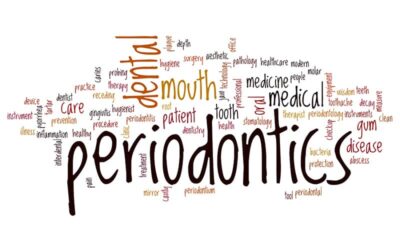CDT codes or the Code on Dental Procedures and Nomenclature are meant to achieve uniformity, consistency and specificity in reporting dental procedures. Accurate documentation of dental treatment is possible with these specific codes.
According to the ADA (American Dental Association), CDT Codes are used for
- efficiently processing dental claims, and
- populating an Electronic Health Record
These codes are compiled by the ADA Practice Institute and experienced medical coding companies stay up to date with the changes in these codes.
What is the latest CDT code update?
ADA reviews CDT Codes annually to ensure that these codes can effectively report specific dental services provided. The latest 2021 CDT code changes by ADA include 28 new codes, 7 revised codes and 4 deleted codes. CDT 2021 codes go into effect on January 1, 2021.
With the recent pandemic at hand, the Code Maintenance Committee has added these procedure codes to CDT list 2021:
- D0604 – antigen testing for a public health related pathogen, including coronavirus.
- D0605 – antibody testing for a public health related pathogen, including coronavirus.
How to choose the right CDT code?
To choose the right dental procedure code to document the services provided, dentists and coders can rely on full CDT Code entry, published in the CDT manual. In the manual, certain procedure codes with their nomenclature are printed in boldface type and some entries come with descriptors printed in regular typeface. ADA has advised not to choose the codes based on reimbursement gained.
What is dental Code D0150?
D0150 Comprehensive oral evaluation – new or established patient
This code is used to report a comprehensive dental exam, where the dentist will be detecting early signs of illnesses that may be left undetected such as diabetes, oral cancer, leukemia, cardiovascular problems and more. A diagnostic treatment plan and an extensive evaluation assessment will be performed and diagnosis may include a periodontal screening as well.
What is CDT code D2950?
D2950 code is usually applied to teeth that do not have enough tooth structure to support a crown. It is important to submit clear documentation of the condition along with all supporting details to insurers to reduce core buildup claim denials.
How are CDT Code and SNODENT related?
SNODENT is Systemized Nomenclature for Dentistry. CDT and SNODENT code set serve different purposes, but both are recognized by federal agencies to be used in the Electronic Health Records of dental patients.
CDT Code
Allows codified Supports codified description of the patient’s condition/other factors that may affect treatment HIPAA standard applicable to electronic dental claims Not a HIPAA standard and may not be reported on a dental claim
| CDT Code | SNODENT (Systemized Nomenclature for Dentistry) |
Are CDT Codes reported with ICD-10-CM codes?
Yes, for commonly occurring conditions. While the CDT Code is maintained by the ADA Council on Dental Benefit Program’s Code Maintenance Committee, ICD-10 is maintained by agencies of the federal government.
Some of the frequently reported CDT Codes and possible ICD-10-CM diagnostic codes given on the ADA website are
For Diagnostic, Evaluations and Exams
- D0120 Periodic oral evaluation – established patient
- D0140 Limited oral evaluation – problem focused
- D0150 Comprehensive oral evaluation – new or established patient
- D0210 Intraoral – complete series of radiographic images
- D0220 Intraoral – periapical first radiographic image
- D0230 Intraoral – periapical each additional film
- D0251 Extra-oral posterior dental radiographic image
- D0272 Bitewings- two radiographic images
- D0274 Bitewings- four radiographic images
- D0330 Panoramic radiographic image
- D0999 Unspecified diagnostic procedure, by report
ICD-10 Codes
- Z01.20 Encounter for dental examination and cleaning without abnormal findings
- Z01.21 Encounter for dental examination and cleaning with abnormal findings
- Z13.84 Encounter screening for dental disorders
Are there chances to get reimbursement only for fewer services than those reported on the claim?
There are chances that dentists may get an explanation of benefits (EOB) that includes reimbursement for fewer services or for different procedure codes than reported on the claim. In such cases, it is important to look at guidance in place regarding CDT Code use.
To avoid reimbursement issues and to maintain a strong dentist-patient relationship, ADA recommends that patients must be informed regarding the limitations of their dental plan prior to treatment. Dental insurance verification services can help dental practices to a great extent in verifying patient’s coverage before treatment and avoiding reimbursement denials or delays.





